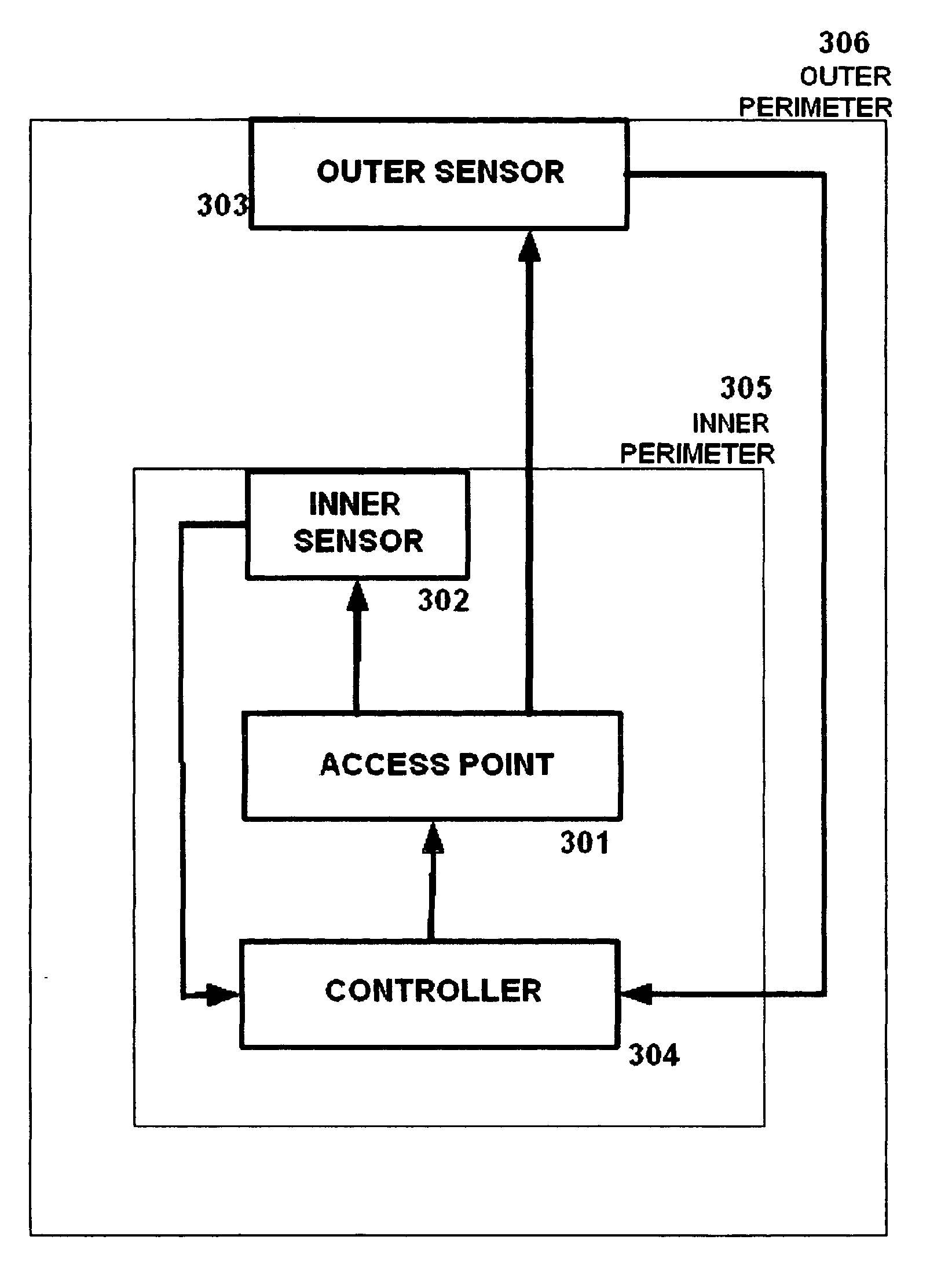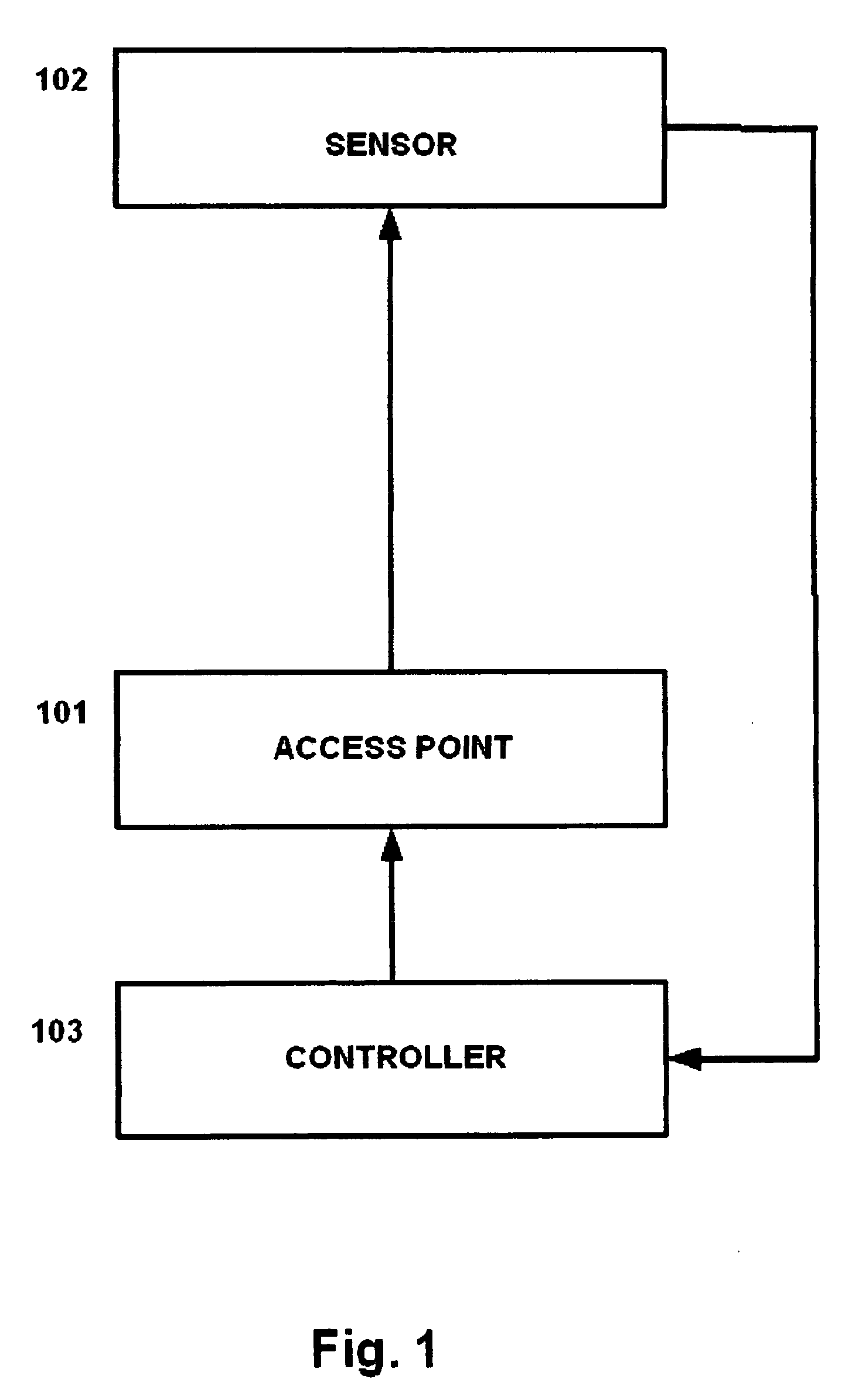Optimizing the protection of wireless local area networks with real-time, flexible, perimeter sensor feedback
a wireless local area network and wireless local area technology, applied in the field of data communication protection, can solve the problems of signal strength decay, wlan radiation zones have a tendency to spill over or “bleed, extremely dangerous” and achieve the effect of preventing signal bleed
- Summary
- Abstract
- Description
- Claims
- Application Information
AI Technical Summary
Benefits of technology
Problems solved by technology
Method used
Image
Examples
Embodiment Construction
[0019]The operation of the present invention will now be described in conjunction with the Drawing Figures.
[0020]FIG. 1 is a flow diagram illustrating an embodiment of the present invention, which protects wireless networks by using radio frequency (RF) radiation sensors (sensors) on the physical perimeter of a campus to detect signal bleed outside of an acceptable geographic range. These sensors provide feedback to the central controller to flexibly adjust signal strength in real time, thus preventing signal bleed beyond an acceptable geographic range.
[0021]As shown in FIG. 1, the access point (AP) at step 101 produces a radio frequency signal. This signal is broadcast across the campus, and may be received by the exemplary sensor located on the perimeter at step 102.
[0022]If the perimeter sensor at step 102 detects a predetermined signal strength from the AP at step 101, this means that the signal is bleeding beyond the desired range. The perimeter sensor at step 102 will then aut...
PUM
 Login to View More
Login to View More Abstract
Description
Claims
Application Information
 Login to View More
Login to View More - R&D
- Intellectual Property
- Life Sciences
- Materials
- Tech Scout
- Unparalleled Data Quality
- Higher Quality Content
- 60% Fewer Hallucinations
Browse by: Latest US Patents, China's latest patents, Technical Efficacy Thesaurus, Application Domain, Technology Topic, Popular Technical Reports.
© 2025 PatSnap. All rights reserved.Legal|Privacy policy|Modern Slavery Act Transparency Statement|Sitemap|About US| Contact US: help@patsnap.com



